Wedding Flower Tips – A Q&A with Wedding Florists
Yes, I’m aware that it’s a Monday, BUT it’s also…
- The day that my new website, in all its refreshed, reinvigorated and rejuvenated 2019 glory, goes live – with a special shout-out to the Planning Advice page which is an homage to my collaborative planning series with Coco Wedding Venues, our Coco & Kat trend report and of course, the inspirational yet practical magazine… The Annual by Coco Wedding Venues.
- The day that I get to hang out once again on the Coco blog and share my latest collaborative practical wedding planning feature.
- And last but by no means least, today’s the day that I also get to introduce you to a brand NEW WEDDING PLANNING SERIES (exclusive to Coco Wedding Venues) – a series that I hope will provide you with an abundance of insight, advice, top tips, confidence, encouragement and support over the coming months and years.
See… pretty epic, right?!
So, what’s the deal with this new series?
In a nutshell, you’ll find me gracing these very pages every 2 months (apart from when the Coco & Kat trend report gloriously interrupts my schedule!) alongside some of my industry colleagues, sharing a wealth of planning advice, in the form of a Q&A, on a supplier category by category basis.
First up, as the title would imply, are wedding florists, with caterers and then photographers to follow.
Without further ado, let me introduce you to my panel of floral pros…
- The enchanting and inspirational Brigitte from Moss & Stone Floral Design
- My dear friend and floral goddess Liz from Blue Sky Flowers
- The renowned creative floral designer Jen from Jenni Bloom Floral Design Studio
At what stage of the planning process should you start to think about florists and flowers?
Brigitte says: Ideally you should start thinking about florists and flowers as early as possible after the date and venue have been secured. All too often wedding florists are left further down the list of priorities after booking the photographer, band, caterer etc. but finding the right florist to deliver your dream can prove difficult if you leave it too late. Feeling confident that your florist understands your brief and can deliver it without hiccups can remove a huge stress from the overall planning process, so thinking about florists and flowers early on means you are much more likely to secure the right florist for you.
Those early discussions with your florist will set the theme, atmosphere and palette for your day. It will also give you a real understanding of what you need to budget to achieve your dream. Quite often the floral budget is significantly underestimated, and once money has been allocated elsewhere this may lead to disappointment. Whether you love flowers or just know you probably should have some – they absolutely will play an important role in creating a magical atmosphere on your day (and will feature in all or your photographs afterwards) so getting it right early on is advisable.
Top tips on choosing a wedding florist, including questions to ask?
Jen says:
- Research florists that aren’t based too far from your venue. If they’re located at the other end of the country then travel costs and mileage will escalate. If they’re based locally, they may also be willing to do a venue visit with you, to chat through and visualise ideas for the space and options.
- Study florists in detail. Don’t just pick up a flyer/business card and think you’re done, take the time and do your research. Look at Instagram feeds and websites, is there a good range of creativity? Does their floral style tie in with your aesthetics? Do their designs resonate with you? Do you like the sound of what they say? If you send them an email, how long does it take them to respond?
- Ask questions, lots of questions. Is there a minimum spend, what’s included, what’s not (i.e. hire of vessels/tealights/candles/props, transport, conditioning, labour etc.), does the clear down/pack away include disposal or do you get to keep the flowers? Do they use 100% imported blooms, or do they use locally grown seasonal flowers where possible… which ties into the whole ethical thread throughout this feature.
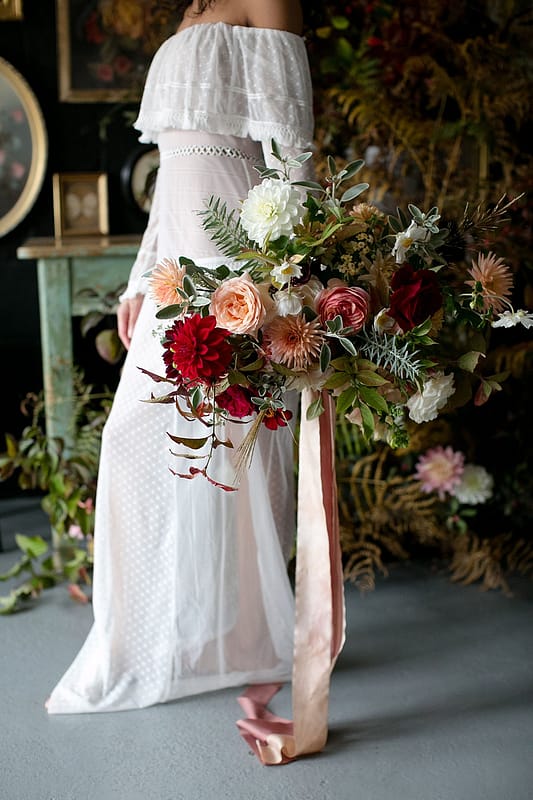
Image by <a class="text-taupe-100" href="http://www.corettefauxphotography.co.uk" target="_blank">Corette Faux Photography</a> | Flowers by <a class="text-taupe-100" href="https://jennibloom.com" target="_blank">Jenni Bloom Floral Design Studio</a>.
Wedding Flower Tips - A Q&A with Our Fave Florists.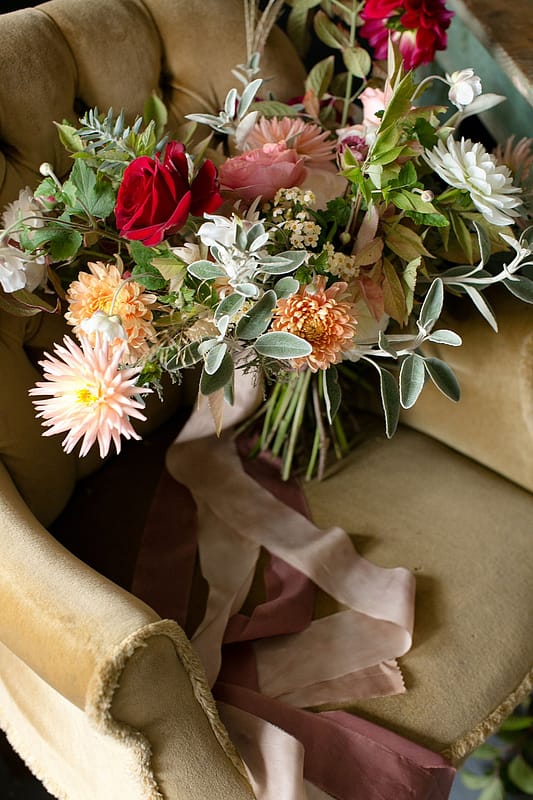
Image by <a class="text-taupe-100" href="http://www.corettefauxphotography.co.uk" target="_blank">Corette Faux Photography</a> | Flowers by <a class="text-taupe-100" href="https://jennibloom.com" target="_blank">Jenni Bloom Floral Design Studio</a>.
Wedding Flower Tips - A Q&A with Our Fave Florists.
Floral budgets – how much and why?
Liz says: Setting a floral budget can be tricky… you may have £1,000 or £10,000 or even £100,000 to spend, but ultimately you have to decide how important flowers are as part of your wedding day. They’ll be in most of the photos you look back on, they’ll create an impression for guests as soon as they arrive and thus will set the tone for the whole wedding and reception.
I’d probably suggest allowing around 10% of your overall budget, but ultimately it will be down to you and what you want to spend.
For a more detailed explanation of floral budgets, including a breakdown of why wedding flowers cost what they do, how much to allocate etc. then this feature (Wedding Flowers Part I: The Budget) from the archive is a MUST read.
Things to communicate with your wedding florist and by when?
Liz says: When you first discuss flowers with your chosen florist you’ll need to decide on the specific areas (i.e. personal flowers, ceremony, reception etc.) and list of items required all the way from the number of buttonholes (a VERY common item to be miscommunicated!) to Meghan-esque arches! Your florist will then use this as the basis for their proposal and your booking with them (obviously, you’ll also need to let them know a guideline budget (if you have one), your wedding date, your venue and your number of guests).
From there they’ll also need to know:
- Your colour palette, vibe and floral/foliage preferences (if you have any – both likes and dislikes)
- The numbers, for example the number of tables at the reception, number of buttonholes, number of bouquets (including ages/sizes of flower girls, pageboys etc.)
- Dimensions such as ceiling heights, aisle length, table size (width/length) etc.
- Timings for set-up, access and clearance, including any restrictions at your venue
- Any other floral requirements i.e. from your caterer (for canapé trays, displays etc.)
Most of the above will have a natural timeline but ideally the sooner you can pass on the relevant information the better to ensure that your florist is continuously kept in the loop – that way they can then make you aware of how the above may affect things, such as your quote!
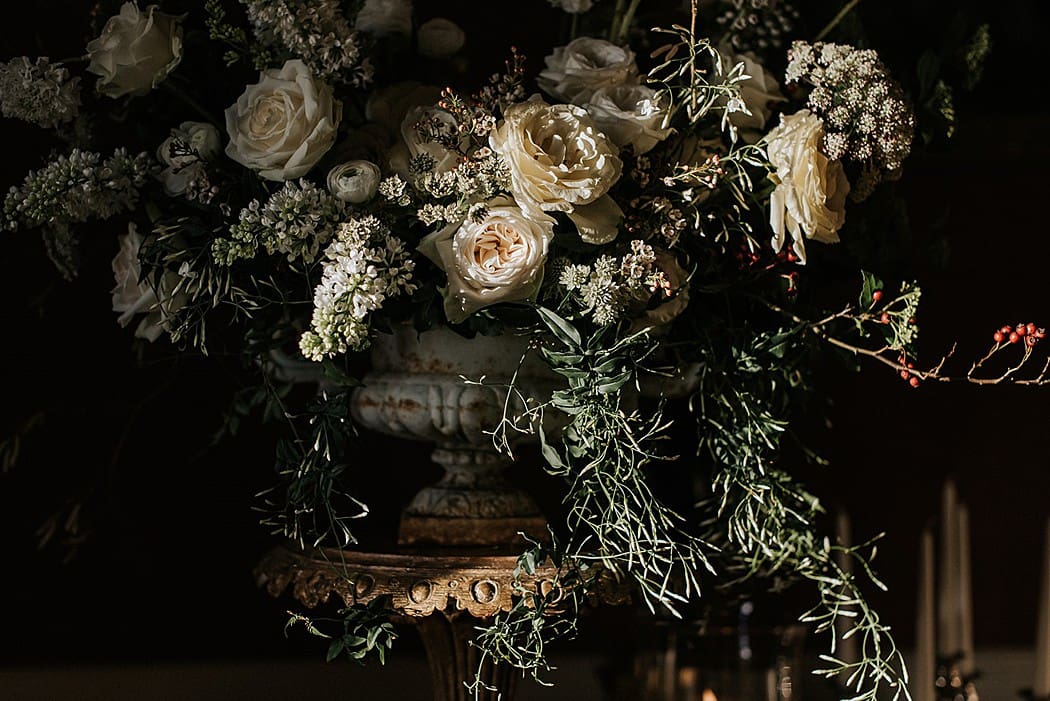
Image by <a class="text-taupe-100" href="https://www.damienmilan.com" target="_blank">Damien Milan Photography</a> | Flowers by Moss & Stone Floral Design.
Wedding Flower Tips - A Q&A with Our Fave Florists.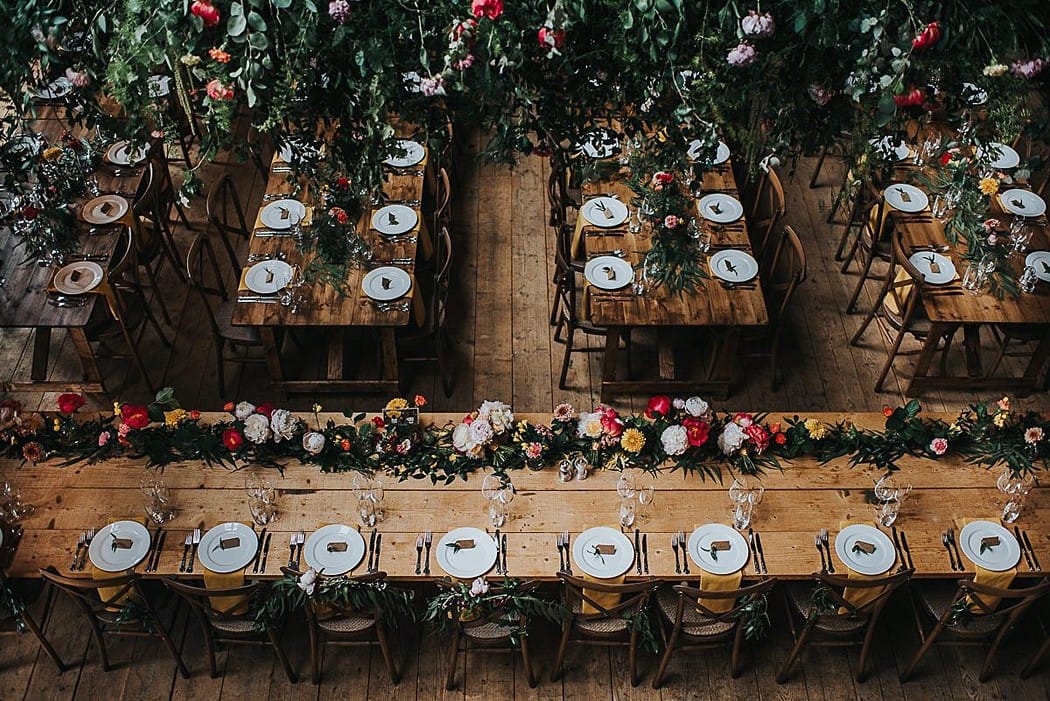
Image by <a class="text-taupe-100" href="http://fromthesmithsphotography.co.uk" target="_blank">The Smiths Photography</a> | Flowers by Moss & Stone Floral Design.
Wedding Flower Tips - A Q&A with Our Fave Florists.
5 top floral tips
Brigitte says:
Feel good by making sure your special day doesn’t cost the earth – literally – and use a florist who will work hard to reduce your environmental impact by using locally sourced flowers and by not using floral foam (if possible) and unnecessary single use plastics.
Choose your florist carefully – is their style in line with your vision, are they easy to work with and responsive and then trust them to deliver your brief while you relax and look forward to your big day.
Be realistic and flexible about your flowers. For example, does your venue allow enough access time for a huge hanging installation, are there suitable and safe hanging points, do you have the budget for the size of floral team required to achieve this. Early discussions with your florist can iron out potential issues and come up with beautiful solutions and alternatives.
I shouldn’t really say this, but, you don’t need flowers everywhere. Looking at an empty church or venue can make you feel that every window ledge, shelf and alcove needs to be adorned but this just isn’t true. Cleverly positioned (and especially re-positioned) key pieces in the right places will make your day feel flower filled and frame each important moment. That alcove that ends up being blocked by Aunt Maud’s hat on the day really didn’t need to be decorated but a beautiful urn framing you both saying your vows will focus everyone’s attention on the moments that really matter. A good florist will help you spend your budget in the right paces not all the places.
Jen says:
Tie in and work with the surroundings of your chosen venue/space, not against them. If it’s a modern, contemporary venue, go contemporary with the flowers. If it’s a rustic aged barn, go rustic and wild with the florals. The same also applies to colours.
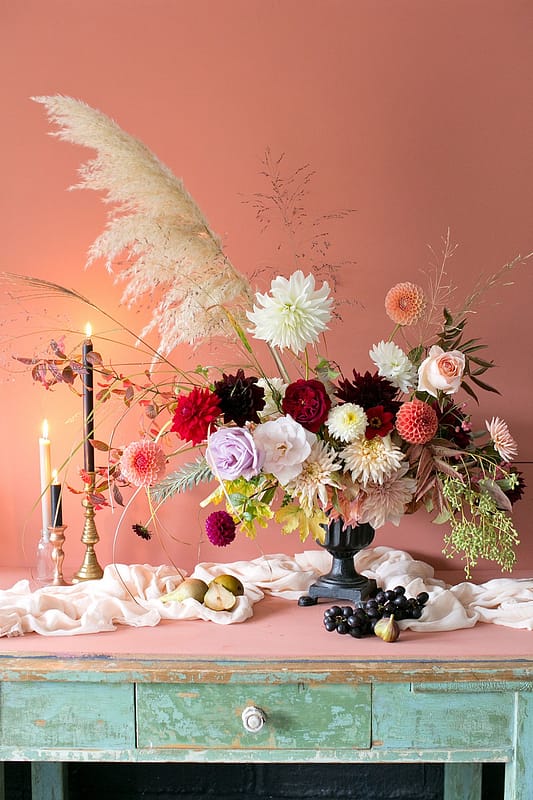
Image by <a class="text-taupe-100" href="http://www.corettefauxphotography.co.uk" target="_blank">Corette Faux Photography</a> | Flowers by <a class="text-taupe-100" href="https://jennibloom.com" target="_blank">Jenni Bloom Floral Design Studio</a>.
Wedding Flower Tips - A Q&A with Our Fave Florists.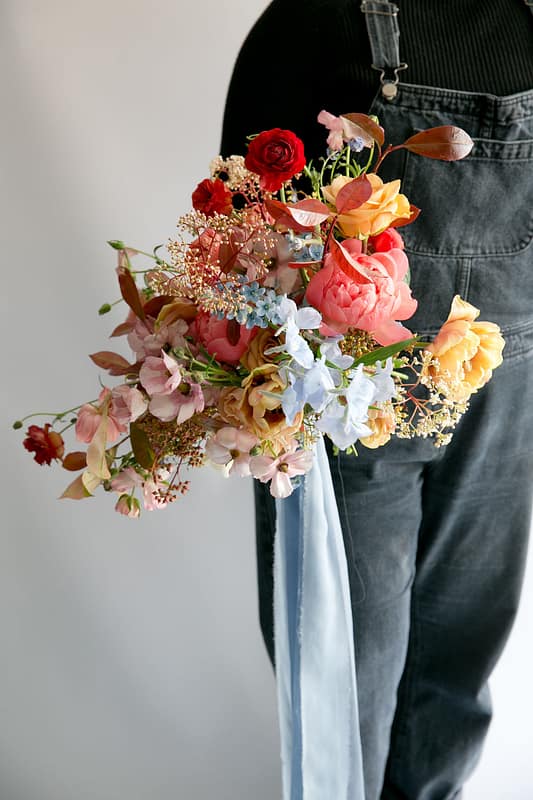
Image by <a class="text-taupe-100" href="http://www.corettefauxphotography.co.uk" target="_blank">Corette Faux Photography</a> | Flowers by <a class="text-taupe-100" href="https://jennibloom.com" target="_blank">Jenni Bloom Floral Design Studio</a>.
Wedding Flower Tips - A Q&A with Our Fave Florists.
2019/20 floral trend predictions
Brigitte says: In 2019/20 we’ll see a move away from heavier flowers and foliage to more considered delicate flowery designs. Less will be more! Couples over the next few years will also be more sustainably considerate, with a growing rise in popularity of seasonal British grown locally sourced flowers.
Liz says: This year I’m still seeing a LOT of ivory and blush with darker pops of colour (i.e. burgundy and plums) and for me personally, I don’t think this will change dramatically over the next couple of years. In terms of style, arches and installations are still big news.
Jen says: I think the 2019 trend of texture and tones; as well as dried ingredients will continue to spill over into 2020. Think tonal, neutral colour palettes, the use of contemporary and unusual ingredients and minimalistic yet stylistic installations creating key focal points in neutral surroundings.
Simple ceramic vessels and bowls in washed out hues also seem to be playing a big part in 2019 weddings and 2020 enquiries. As is the continuation of Japanese influenced ceramics combined with contemporary florals, with the use of one type of flower for both small and large scale installations.
Statement, bloom type flowers are as timeless as ever, as are garden roses with unfurled petals. I’m also hoping that we’ll start to see an increase in the use of bold dramatic colours to juxtapose with the more neutral tonal current themes.
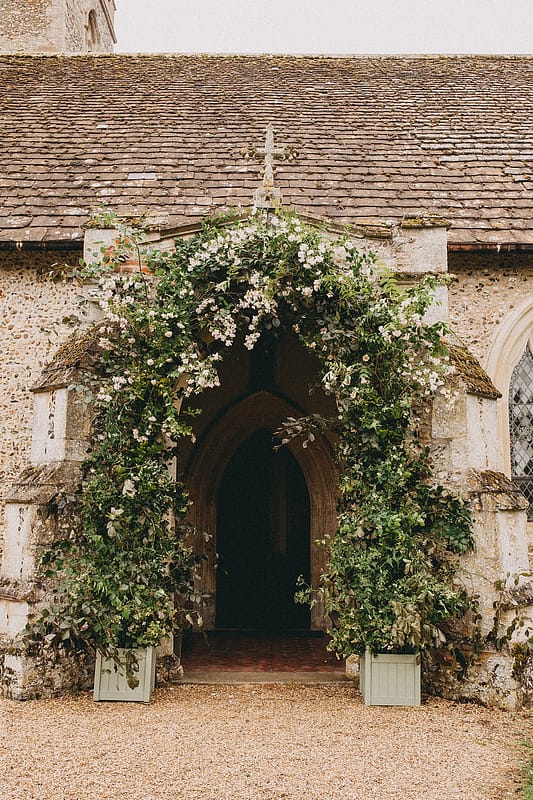
Image by <a class="text-taupe-100" href="http://alipaul.com" target="_blank">Ali Paul Photography</a> | Flowers by Moss & Stone Floral Design.
Wedding Flower Tips - A Q&A with Our Fave Florists.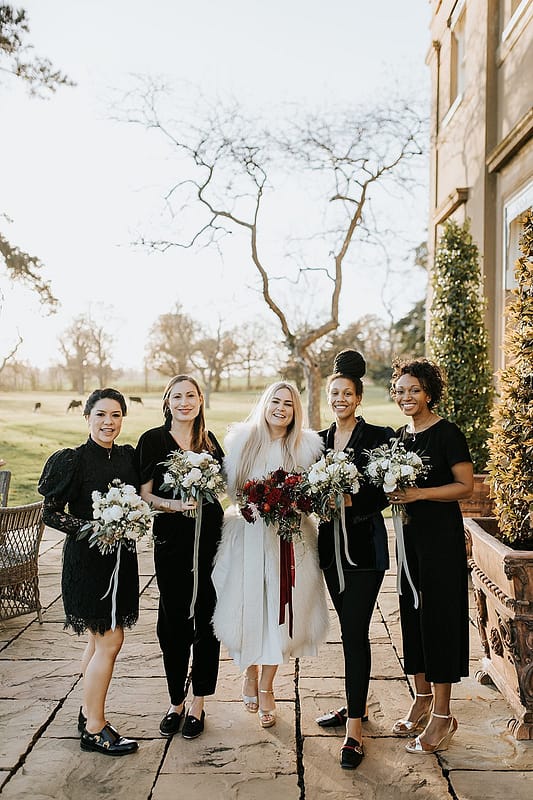
Image by <a class="text-taupe-100" href="https://www.damienmilan.com" target="_blank">Damien Milan Photography</a> | Flowers by Moss & Stone Floral Design.
Wedding Flower Tips - A Q&A with Our Fave Florists.
And there we have it… one guide (in the series) and floral Q&A down, with even more tips and planning advice to come.
Thank you, Brigitte, Liz and Jen, for your valuable insights and for imparting your expertise. And if you’re in the process of looking for a wedding florist then do head on over and check out Moss & Stone Floral Design, Blue Sky Flowers and JenniBloom Floral Design Studio, including their Instagram feeds = romantic, abundant, aspirational, floral heaven!
And you know, just because, here’s another shout-out to the new look me… if you need any planning assistance get in touch!
Discover our Venues
Refine your wedding venue search by location, capacity, type, and style.
Visit Venue FinderSuppliers We Love
From photographers to bridal fashion and styling, find the best wedding suppliers right here.
View Suppliers